This is one in a series of posts on the Nikon Z6 and Z7. You should be able to find all the posts about that camera in the Category List on the right sidebar, below the Articles widget. There’s a drop-down menu there that you can use to get to all the posts in this series; just look for “Nikon Z6/7”.
The Sony 12-24 mm f/4 E-mount zoom lens is pretty special (it made me sell my WATE). One of its few flaws is annular flare in some circumstances. The Nikon 14-30 f/4 Z-mount lens doesn’t have that drawback, and, from the screening test I did, is pretty sharp in the corners, if you pick a good one.
I mounted the Nikon 14-30 on a Z7 and the Sony 12-24 on an a7RIII. Here’s the scene I used, at 14 mm wide open for both lenses:
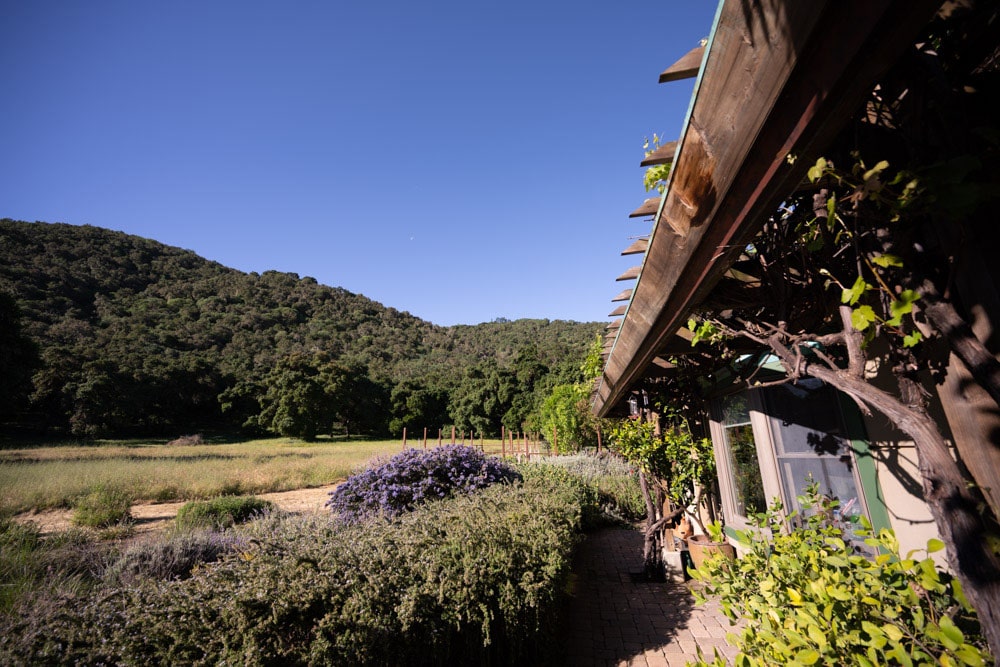
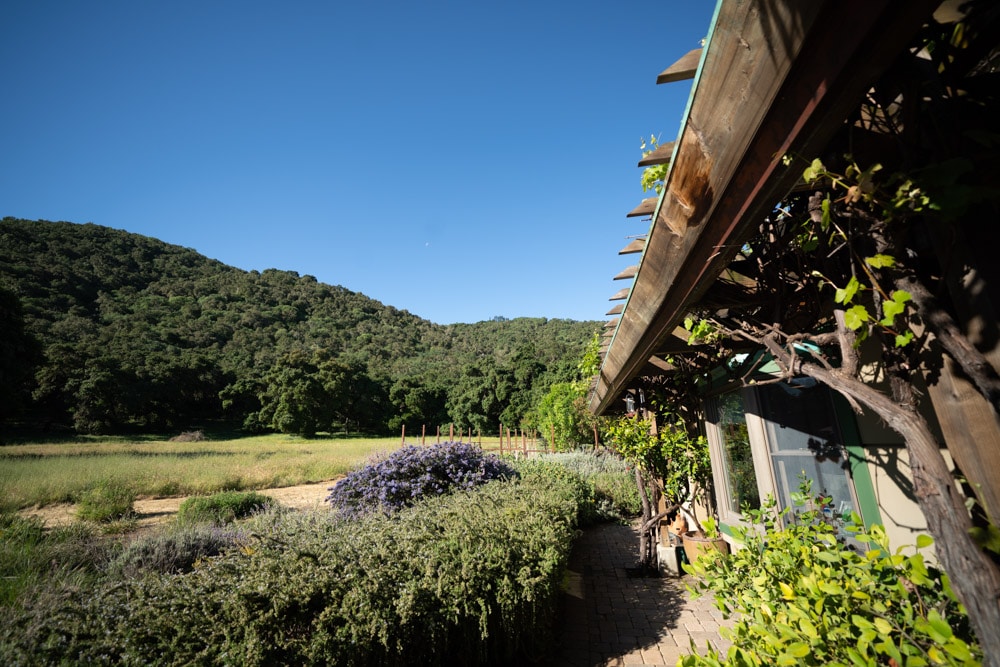
Making three shots for each variation and picking the sharpest, I exposed at base ISO: 64 for the Nikon and 100 for the Sony. I developed the images in Lightroom, using the Adobe Color profile and Daylight white balance for both. Even so, the colors are strikingly different. The default sharpening and noise reduction settings are different for the two cameras. I made them the same, and dialed back Adobe’s over-aggressive sharpening from 40 to 20. There are some hidden differences that I couldn’t make the same, like distortion correction, which Lr performs on both lenses.
Now we’ll look at some very tight crops. I’ll start out with a few center crops, which won’t tell us much, then switch to the upper right corner, which is one good corners for my copy of the Nikon 14-30. The Sony doesn’t really have a bad corner. I’ll change the way the camera points so that the little grove of trees is the center of the crops in all of the pictures.
If you’ve seen these here before, just jump to the images. If not, I need to spend some time telling you how to interpret them. They’re at roughly 250% magnification, enlarged to 700 pixels high on export from Lightroom. If you just want a rough idea of the differences, just look at the images as displayed in-line in the posts. However, if you wish to compare these images in detail, you should view these images by clicking on them to see the source files, then set your browser for 100% zooming. Even better, download them and make Photoshop stacks.
No matter what you do, these crops are all going to look horrible. I’m blowing them up so much so that they will represent the original file after JPEG’s discrete cosine transform has had its way with them. If you want to get a good idea of what the images would look like printed, get far away from your monitor. No, farther than that. Put a bunch of the images up on the screen and back up until the best one starts to look good. Then look at the others. There’s another reason why these images won’t look like the best thing the camera/lens combination can deliver. They’re demosaiced with Lightroom. Lightroom is not awful, but for a particular image, there are usually better raw processors. I use Lr because it’s a de facto standard, because I know it well, and because it’s got good tools for dealing with groups of images.
Here’s how to use these highly-magnified crops. The dimensions of the Z7 sensor is 8256×5504 pixels. If we make a full-frame print from the Z7 on a printer with 360 pixels per inch native driver-level resolution, like the Epson inkjet printers, we’ll end up with a 23×15 inch (58×39 cm) print. The 317×246 pixel crop you’re looking at will end up 0.8×0.68 inches (2.12×1.74 cm). The Sony crops are 306×237 since it is a slightly lower-resolution sensor. Lightroom used to scale crops by picture height but seems to have stopped doing that. Let’s imagine that you or your viewers are critical, and will look at the 22×15 inch print from about 18 inches (conventional wisdom is that the distance would be a little greater than that, or 28 inches (the diagonal), but you did buy a high-resolution camera for a reason, didn’t you?).
The next step is dependent on your monitor pitch, which you may or may not know. Turns out, you don’t have to know it. Just take the 250% crops and view then at 1:1. How high are they? Get out your ruler and measure, or just guess. Let’s say they are 6 inches high. 6 inches is about 7 times 0.8, so in order to view the crops the way they’d look from 18 inches on the print is to view them from 7 times as far away, or 10.5 feet.
Everything here scales proportionately. If the image on your screen is bigger than 6 inches, increase your viewing distance by the ratio of your image height to 6 inches. If you think your viewers are going to almost get their nose to that print and look at it from six inches, divide that 10.5 feet by 3, and look at the image on the monitor from three and a half feet away.
OK, here we go. In the center, at the same apertures:
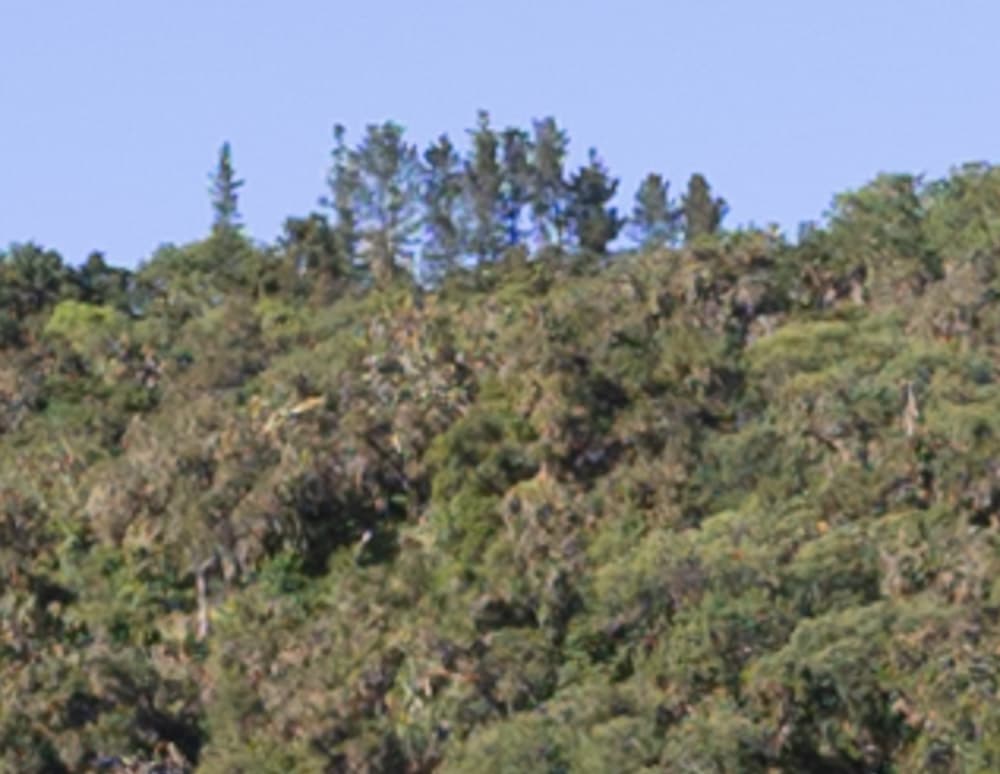
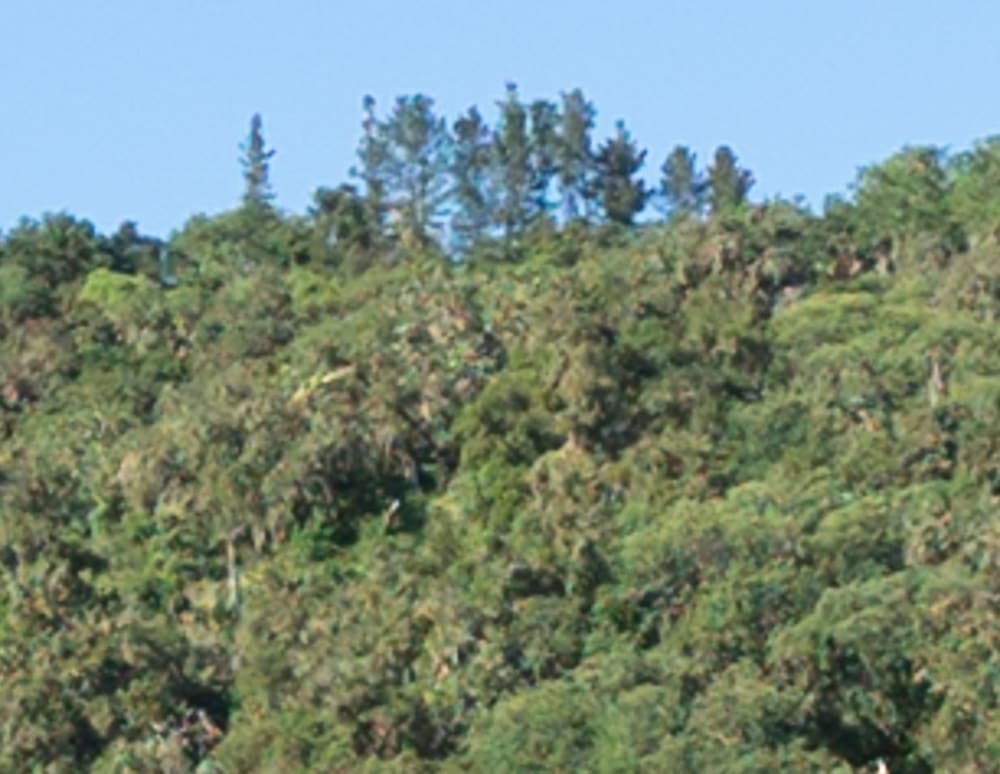
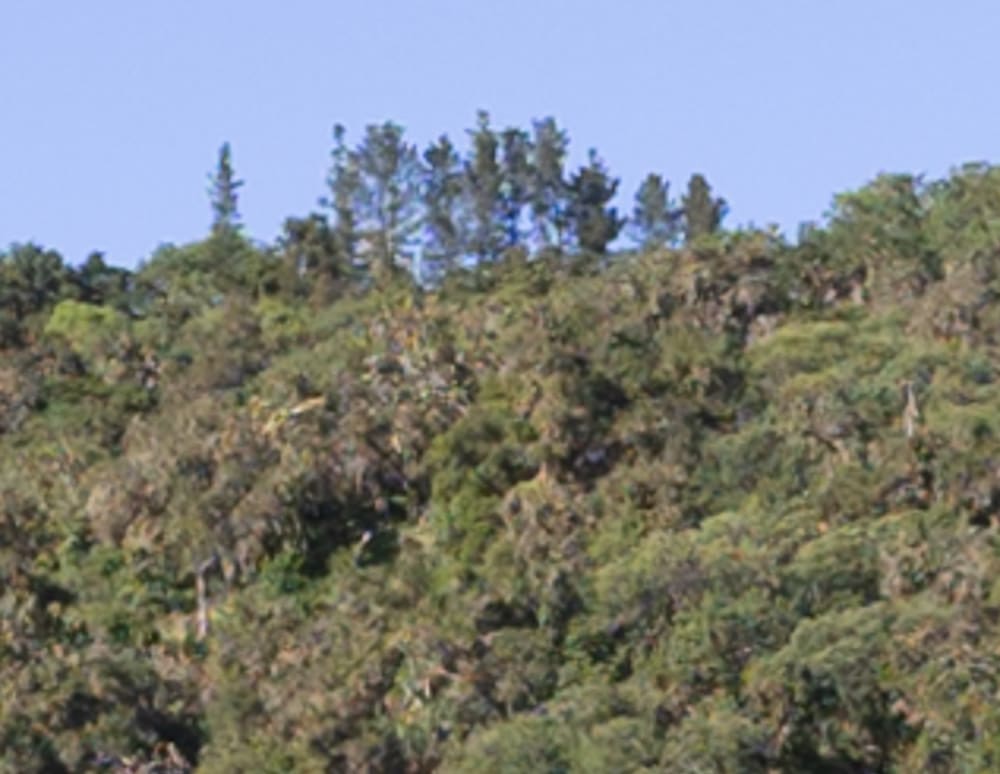
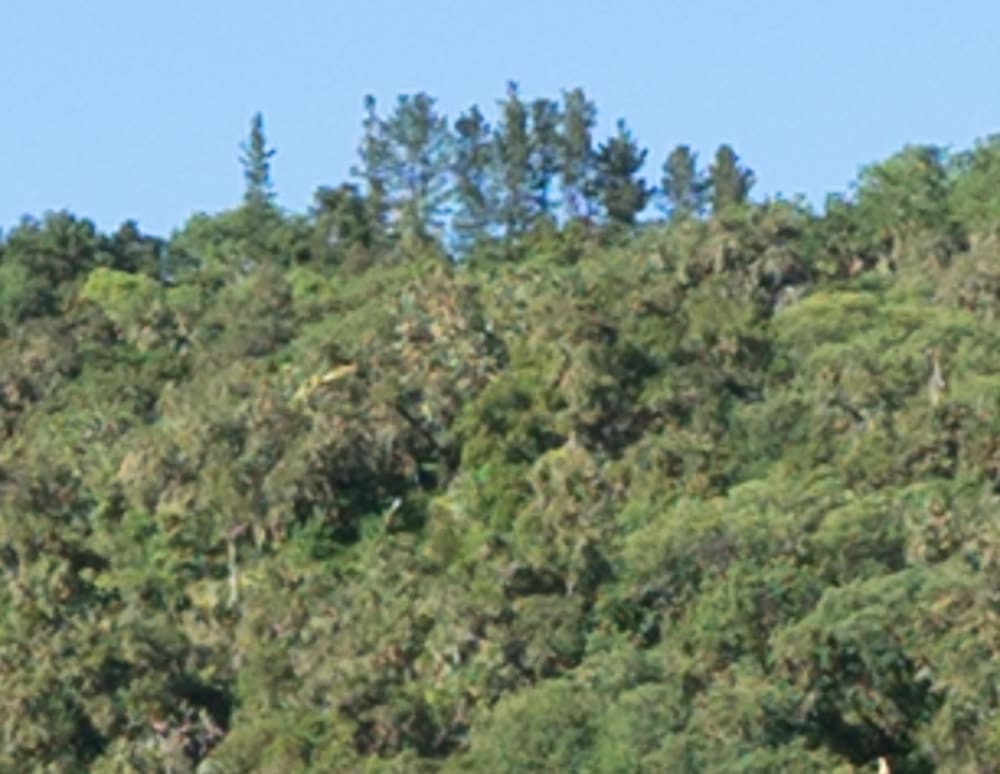
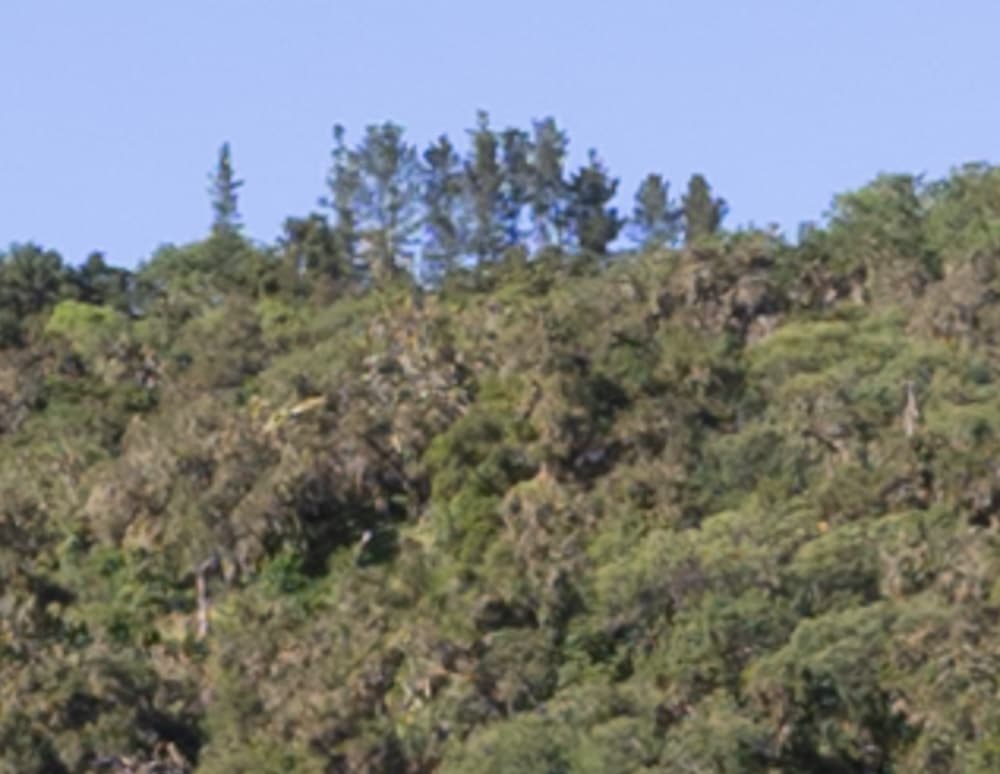
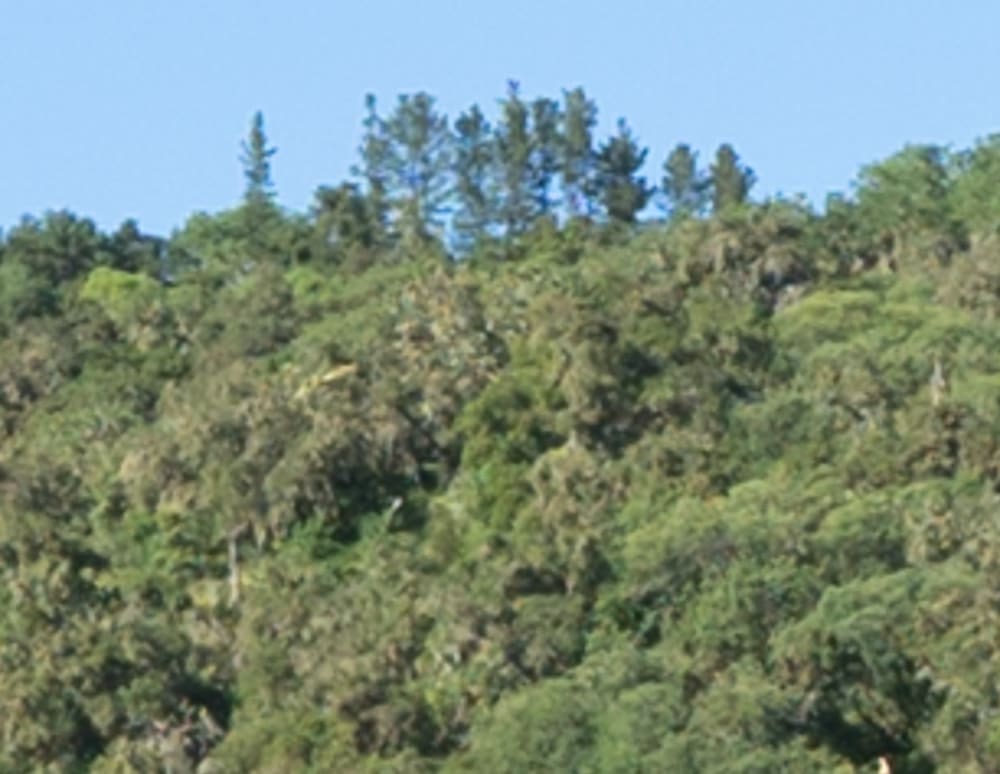
There’s not much to be learned from these. I’ll spare you the f/11 shots.
In the upper right corner:


The Nikon might be fractionally sharper. Both are fine.






Both lenses look great.
In the same corner at 24 mm:
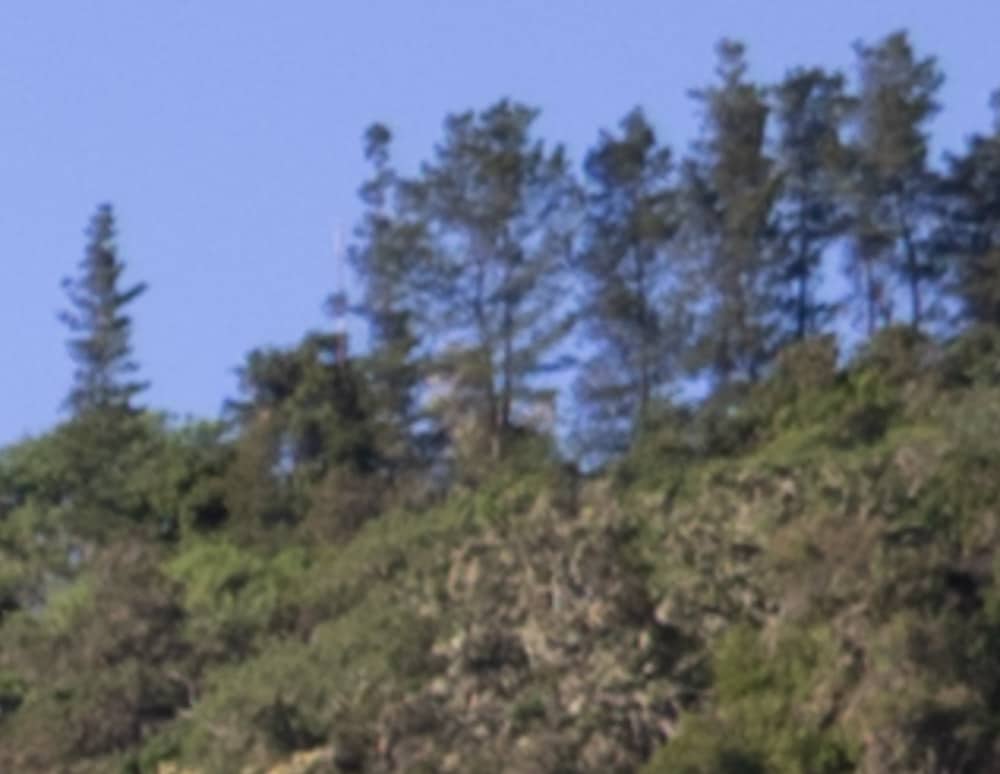

The Sony is slightly sharper.


Sony is still a hair better.


Now they’re very similar.


I just don’t see much difference between these lenses on this test. That’s good news for Z6 and Z7 owners, because the Sony 12-24 is an outstanding lens.
chuck forsman says
Sharpness-wise, they look equivalent, but the Nikon Z has much more natural color. The Sony appears to be wider at 14mm. Could this be because the 14-30 is corrected too much to reach a true 14mm or is this because of not adjusting the 12-24 precisely?
Thank you.
JimK says
I think the color differences are mostly white balance; the Nikon is redder. I don’t think the width differences are significant. Hard to say why they occurred. Lens focal length marking is not usually precise.
Lukas says
Thanks for this comparison. It is surprisingly hard to find side by side comparisons of the Nikon 14-30 f4s with similar lenses from Sony and Canon. With people making the switch from SLR to mirrorless there must be a higher than normal amount of people looking into starting a new lens collection from scratch. This makes these inter manufacturer comparisons very valuable as compared to the more common comparisons between lenses from the same manufacturer. Would you be able to do a similar side by side comparison of the Nikon 14-30 f4s with the Sony/Zeiss 16-35 f4 and maybe even the Sony 16-35 f2.8 (admittedly not a fair comparison but still interesting)?
JimK says
Sorry, I don’t have either of those two Sony zooms.
Lukas says
I see, thanks for the quick response!
Marc says
Hi Jim,
Reading your sentence
” The Nikon 14-30 f/4 Z-mount lens doesn’t have that drawback, and, from the screening test I did, is pretty sharp in the corners, if you pick a good one.”
I wonder if you have evidence about a high sample to sample variation of this or other Z lenses.
My hopes for complete new lens designs and manufacture are that the manufacturers use new production processes with a higher degree of automation and better embedded quality assurance between manufacturing steps, which ultimately should lead to lesser variation from the designed lenses with tighter tolerances leaving the factory. If they want to.
Best regards
Marc
JimK says
I do not. And I have no reason to believe that Z lenses have higher sample variation than other lenses.